The stock market is constantly evolving and new technologies are continuously being introduced. Artificial intelligence (AI) is one of the most disruptive technologies in the world of stock trading. AI significantly extends trading opportunities and enables traders to complete thousands of trades in a matter of hours.
In fact, AI-powered trading is expected to become the preferred choice for traders and investors by the year 2023.
However, while AI has many advantages, it also raises questions and concerns about its impact on the stock market.
In this blog post, we will explore the future of stock trading with AI and its potential benefits and drawbacks. We will also delve into how AI trading works, its legality, who can use it and which AI tools are available for trading.
Let’s jump right into it.
From Wall Street to Silicon Valley: How AI is Disrupting Stock Trading as We Know It
The advancements in artificial intelligence have brought about significant changes in several industries. Stock trading is one of the areas that have been disrupted by AI.
The transformation from the traditional Wall Street approach to the more innovative Silicon Valley model has made it possible to achieve better investment results.
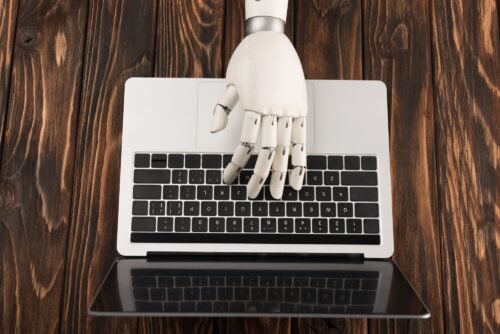
“AI has enabled traders to analyze vast amounts of data, identify trends and patterns, and predict the future performance of stocks. This has significantly reduced the risks associated with stock trading and has made it more accessible to everyday investors”, says Freddie Smith, CEO of Sporting Post.
That said, here are the different types of AI trading you need to know:
Machine Learning Trading: This type of AI trading uses complex algorithms to analyze vast amounts of data to make trading decisions.
It is based on the principle that the more data you feed into the algorithm, the better it will be at predicting market movements. Machine learning trading is popular because it can identify trading patterns that humans would not be able to see.
Sentiment Analysis Trading: This type of AI trading involves analyzing social media and news feeds to understand the public’s sentiment towards a particular stock or popular asset. It is used to predict how the market will react to certain news or events. Sentiment analysis trading is popular because it is a quick and efficient way to get a sense of market sentiment.
High-Frequency Trading: This type of AI trading involves the use of algorithms to buy and sell assets within seconds. It is popular because it can react to market changes faster than humans can. High-frequency trading is also associated with lower transaction costs and increased liquidity.
Quantitative Trading: This type of AI trading involves the use of mathematical models to make trading decisions. It is based on the principle that there are patterns in market movements that can be predicted using mathematical models. Quantitative trading is popular because it can take into account more factors than humans can and can identify trading opportunities that humans would miss.
Robo-Advisors: This type of AI trading involves the use of algorithms to provide investment advice and manage portfolios.
It is popular because it can provide personalized investment advice and manage portfolios at a lower cost than traditional financial advisors. Robo-advisors are also popular because they can provide 24/7 access to investment advice.
Jeoffrey Murray, Digital Marketing Expert at Solar Panel Installation, says, “While there is no doubt that AI trading is a powerful tool that has revolutionized the world of finance, it is not without its flaws.
While it can make predictions based on patterns, it cannot account for unforeseen events that could impact the market.”
With that said, let’s move onto the next important point.
AI in Stock Trading: Advantages and Disadvantages
While the use of Artificial Intelligence (AI) in trading has revolutionized trading strategies, there are pros and cons to consider.
On one hand, AI can analyze vast amounts of data at an unprecedented speed to detect high growth stocks, providing traders with valuable insights and generating profitable trades.
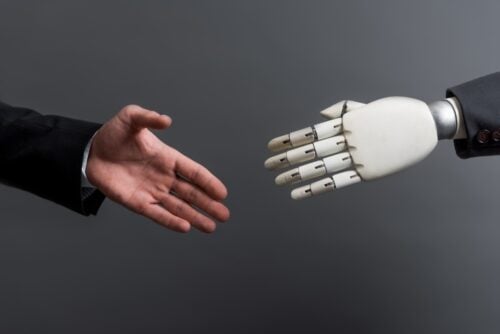
On the other hand, however, it also raises concerns about market manipulation and the possibility of machine errors leading to catastrophic losses. Have a look at its pros and cons:
|
Pros |
Cons |
|
The hastened maneuvering of initiating and finalizing stock positions |
Problems with technology and internet connection can harm trading results. |
|
The capability to place multiple orders within a brief span of time |
Even with AI technology, humans must still oversee the trading platform. |
|
Adhering to regulations (without emotions) improves judgment |
Trading tactics based on past tests may not work well in real-life trading. |
|
Analyzing past data minimizes upcoming risks and conserves capital |
|
|
Mechanization instills self-control and ensures execution of trading strategy |
|
|
Swift action based on current market trends and price surges averts loss |
|
|
Expedited and automated production of positions once registered |
|
|
Streamlined allocation permits dispersal of risk across various monetary tools |
How Exactly AI Trading Works?
AI trading can be the next big thing in the world of finance, and it’s not hard to see why. This revolutionary technology has the potential to change the way we invest forever.
But how exactly does AI trading work? Well, it’s a complex process that involves a wide range of algorithms, data analysis, and machine learning. Here are the key steps involved in the process, simplified:
Data collection: The first step in AI trading is to gather as much data as possible about the financial markets. This includes everything from stock prices and market trends to news articles and social media posts.
Data analysis: Once the data has been collected, it’s time to analyze it. This involves using complex algorithms to identify patterns, trends, and correlations in the data.
Decision making: Based on the results of the data analysis, the AI system will make decisions about which stocks to buy or sell. This is done using a combination of rules-based decision-making and machine learning algorithms.
Execution: Once the decisions have been made, the AI system will execute trades automatically. This means that human intervention is no longer necessary, which can save a lot of time and money.
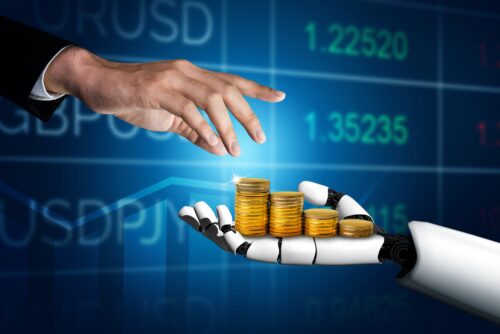
When asked, Brad Anderson, Founder of FRUITION, shared, “One of the key benefits of AI trading is that it can take emotion out of the equation. Human traders can often be swayed by fear, greed, and other emotions, which can lead to poor decision-making. But AI systems don’t have emotions, which means they can make rational, data-driven decisions.”
Tom Miller, Director of Marketing at FitnessVolt, also shared, “AI trading can be incredibly fast; because the system can process vast amounts of data in real-time, it can identify opportunities and execute trades much faster than a human trader ever could.”
But, of course, AI trading isn’t perfect.
There are still risks involved, and it’s important to understand the limitations of the technology. But, it’s still an exciting development that has the potential to change the world of finance forever.
For that reason, Gene Fitzgerald, Head of Marketing at BOS, shared, “We can already see technologies behind tools like ChatGPT disrupting the marketing and business industry. And the similar great tech in the stock industry might also shape a new, brighter, fairer future for stocks.”
Legal Issues Surrounding AI Trading
Legal issues can be really complex with AI trading. As Douglas McShane, Operations Director at Sheffield First Aid Courses, shares, “The rise of AI trading has created a digital jungle where traditional legal frameworks are struggling to keep pace with the lightning-fast movements of algorithms. Navigating the legal issues surrounding AI trading requires a keen understanding of the terrain.”
From the regulatory framework to the ethical concerns surrounding the use of AI trading, it is essential for traders to have an understanding of the legal landscape.

Here are some legal issues that surround AI trading:
Regulatory Framework: One of the biggest legal issues surrounding AI trading is the lack of regulatory framework. As AI trading is still in its infancy, there are no clear-cut laws or regulations governing its use. This creates uncertainty and makes it challenging for traders to navigate the legal landscape.
Data Privacy: AI trading relies on vast amounts of data to make informed decisions. However, the collection and use of this data raise concerns about data privacy. Traders need to be aware of the laws and regulations surrounding data privacy and ensure that they are compliant with these regulations.
Algorithmic Bias: AI trading algorithms can be biased, leading to unfair and discriminatory outcomes. Traders must be aware of the potential for algorithmic bias and take steps to mitigate these risks.
Cybersecurity: With the use of AI trading, the risk of cyber threats increases significantly. Traders need to ensure that they have robust cybersecurity measures in place to protect their trading systems and data.
Liability: In the event of an error or malfunction in the AI trading system, who is liable? Traders need to consider the legal implications of any issues that may arise with their AI trading system.
In short, you need to stay up-to-date with the regulatory landscape, data privacy laws, algorithmic bias, cybersecurity measures, and liability concerns to ensure you are compliant and protected.
Who Can Use AI in Trading?
When asked, Jake Smith, Founder of Personalized Number Plates, he said, “The short answer is — anyone! Yes, anyone can use AI to trade assets. The long answer? — it’s not that simple. Because it’s not as simple as downloading an app or buying a robot.”
True. Because…
AI trading requires understanding of the market, data analysis, algorithms, and all that technical nimbo-jimbo.
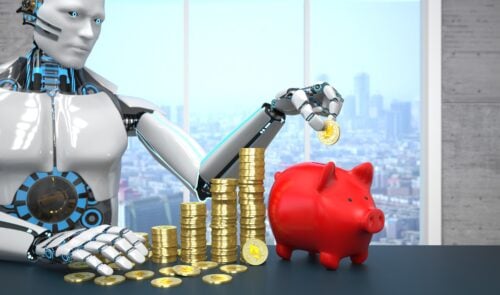
Here are some key players who might be able to comfortably use AI to trade assets:
Traders: Experienced traders can use AI to make informed trading decisions by analyzing large sets of data and using predictive analytics. This can lead to better investment returns and reduced risk.
Hedge funds: Hedge funds can use AI to analyze market trends and make quick trades based on real-time data. This helps them gain an edge in the market and outperform their competitors.
Asset managers: Asset managers can use AI to analyze their portfolios and make strategic decisions to maximize their returns. By leveraging AI, they can identify potential risks and opportunities in real-time.
Retail investors: Retail investors can also benefit from AI trading by using robo-advisors that use algorithms to manage their portfolios. This helps them reduce risk and optimize their returns.
Financial institutions: Banks and other financial institutions can use AI to analyze customer data and make personalized investment recommendations. This can help them attract and retain customers, as well as increase their revenue.
Before you go about it, here are some tips for using AI in trading:
Understand the technology: Understand how it works and what it can do. Take the time to research and learn about the different types of AI and how they can be used in trading.
Start small: Don’t jump into AI trading headfirst. Start with a small investment and gradually increase your exposure as you become more comfortable with the technology.
Have a solid strategy: AI trading is not a magic bullet. It’s important to have a solid investment strategy that is based on sound principles and proven techniques.
Monitor your performance: Keep track of your performance and make adjustments as necessary. Use data analysis to identify areas where you can improve and make changes accordingly.
Whether you’re a small retail investor or a large institutional firm, AI can provide you with the insights you need to make smarter, more profitable trades. But, as Jonathan Merry, CEO & Founder of Moneyzine, shares, “Just as a carpenter must learn to wield a hammer with precision and finesse, traders must develop the skills and expertise to harness the full potential of AI trading.”
Are There Any AI Trading Bots You Should Know?
If you’re unaware, AI trading bots are computer programs (not actual robots) that use artificial intelligence and machine learning algorithms to make informed investment decisions in real-time. They have numerous benefits, including:
- Increased efficiency in analyzing market data and making trades
- The ability to process large amounts of data quickly and accurately
- Improved accuracy in predicting market trends and identifying profitable investment opportunities
- Reduced human error and emotional bias in decision-making
- 24/7 availability for monitoring and executing trades
Some examples of AI Trading Bots are:
- Tickeron
- Equbot
- Algoriz
- TrendSpider
- Scanz
- Imperative Execution
Breaking Barriers: The Future of Stock Trading with AI
The future of AI trading is a topic that is at the forefront of the minds of many investors and traders. With the rapid advancements in technology, the use of AI in trading has become more and more prevalent, and it is only expected to grow in the coming years.
AI trading has the potential to revolutionize the way we invest and trade, by providing faster, more accurate, and more informed decision-making.
The use of machine learning algorithms, natural language processing, and big data analysis has enabled traders to identify patterns and trends that would be impossible for humans to detect.
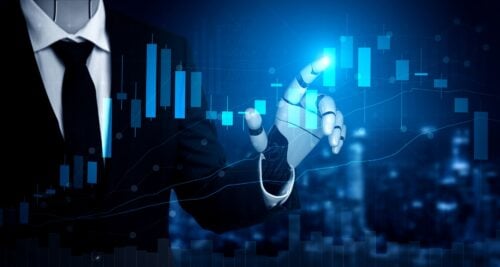
Jonathan Merry, Vice President at MoneyTransfers, shares, “The biggest advantage of AI trading is that it removes human bias from the equation. Emotional trading decisions can often lead to losses, but AI-powered trading algorithms can analyze market data objectively, without the emotional baggage that comes with human decision-making.”
However, the adoption of AI trading is not without its challenges.
Jonathan Faccone, Managing Member & Founder of Halo Homebuyers, shares, “One of the biggest concerns is the risk of machine error, which could lead to significant losses for investors. While AI can be a valuable tool for traders, it is not a silver bullet solution.”
To mitigate the risks associated with AI trading, follow some best practices. These include:
- Monitoring AI algorithms regularly to identify any unexpected or undesirable behaviors.
- Ensuring that the AI algorithm is transparent and explainable, so that traders can understand how it is making its decisions.
- Continuously testing and refining the algorithm to improve its accuracy and performance.
- Combining AI with human expertise to create a hybrid trading approach that leverages the strengths of both.
The future of AI trading is incredibly promising, and it has the potential to disrupt the entire financial industry. As Luke Eales, Founder of Wealth.co.uk, shares, “AI trading is not just a means to create wealth – it has the potential to build a legacy that can last for generations. It is like having a personal financial advisor that works tirelessly day and night, constantly seeking out new avenues for wealth, but of course, not without risks.”
The Takeaway
The use of AI in investment decision-making is a double-edged sword. While it presents the potential to make informed and profitable decisions, it also has the potential to cause devastating losses if relied upon blindly.
As investors, it is crucial to proceed with caution and great research when utilizing AI in our investment strategies.
AI is a powerful tool that can help investors make sense of vast amounts of data and identify trends that may not be apparent to the human eye. However, we should be mindful that algorithms are only as good as the data they are fed.
Therefore, we need to ensure that we are providing AI systems with high-quality data to obtain accurate results.
Moreover, investors should not forget that AI is not a substitute for human expertise and judgment. Take into account the human aspect of investing and incorporate our intuition and knowledge in our decision-making process.
AI should be seen as a supplementary tool rather than a replacement for human decision-making.
To make the most out of AI’s potential, we must be aware of its limitations and potential pitfalls. This means that we must conduct thorough research and analysis to ensure that we are using the most reliable and accurate AI systems.
It also means that we need to be mindful of our biases, including the ones that we may unknowingly embed in the algorithms.
Good luck!

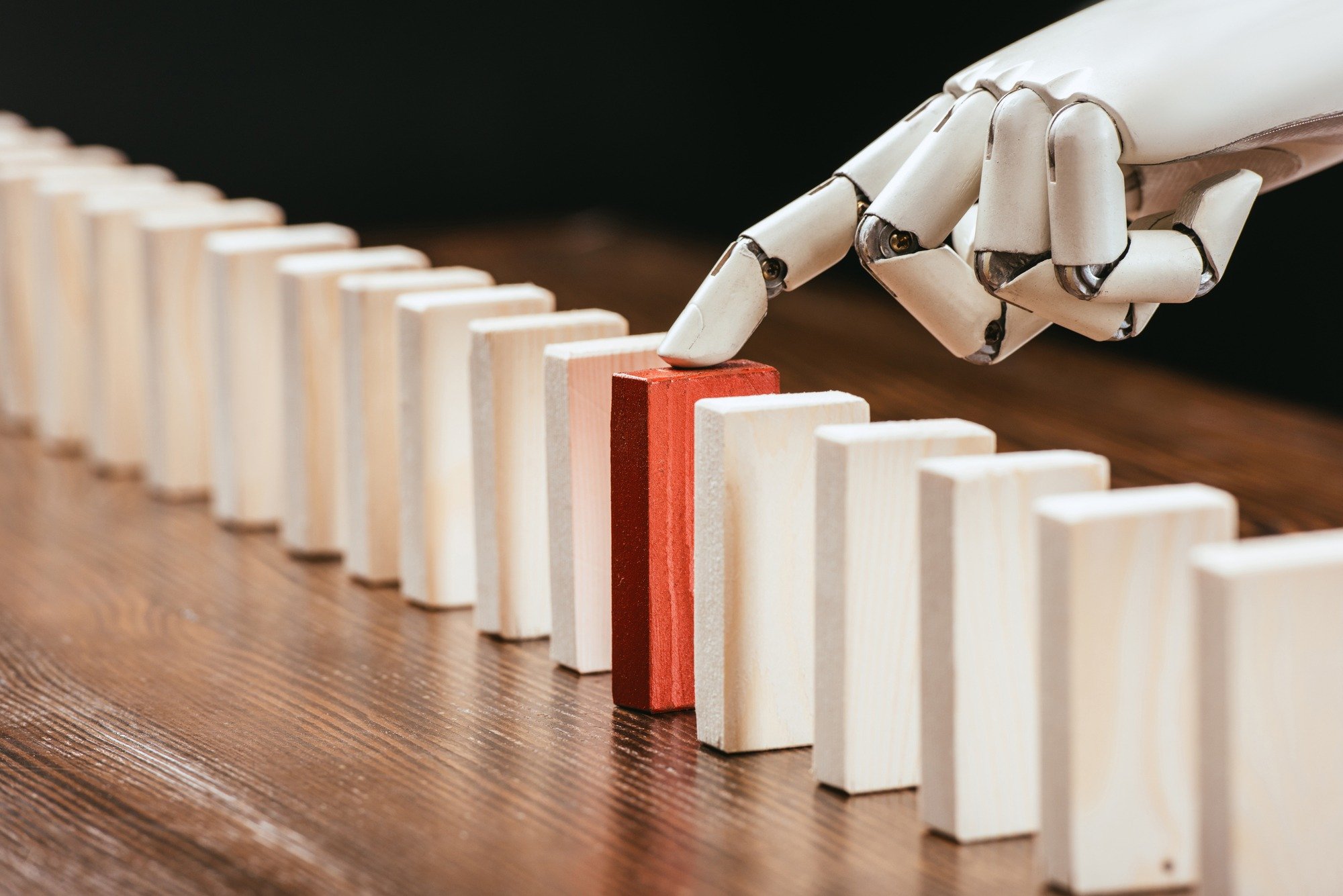
 Tags:
Tags:










